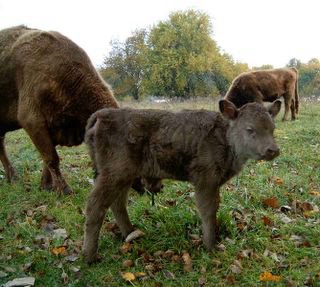You are what your animals eat
by Jo Robinson
Jo Robinson, nutrition maven and co-author of The Omega Diet, said that most animal scientists don't seem to think there is a connection between what they feed animals and human health but there is.
"One, if it's in their feed, it's in our food. Two, if it's in our food, it's affecting our health. The new paradigm is we are what our animals eat," she said.
Americans currently have a gross imbalance of Omega-6 to Omega-3 fatty acids. Robinson said this is largely due to the feeding of wilted forages and grain to dairy cows and to the widespread practice of grain finishing beef.
She said research on people who had at least one heart attack and were put on a high Omega-3 diet showed a 70% decline in mortality. These same people also showed a 61% reduction in cancer deaths.
Omega-3 is an important brain fat. Children who were fed high Omega-3 diets had an IQ nine points higher than the average American child. High Omega-3 diets have also been found to be effective in treating depression.
She said grass feeding not only increased the Omega-3 level in ruminants but also in the eggs of pastured poultry and the meat of pastured hogs as well.
Currently the USA has the least amount of CLA in its diet of any country in the world. However, this is a relatively recent phenomenon.
Robinson said that in 1947 when she was born, 70% of all the beef eaten in the United States was from grass fed animals. "We don't need artificial designer food. We just need to get it back to where it was. We want to eat what is normal and natural."
She said Omega-3 fatty acid was extremely unstable and rapidly dissipated if exposed to air. This is why hay and wilted silages are low in Omega-3 fatty acids and cannot replicate the healthy meats and milk of direct-grazed pasture.
"You will never have a non-direct grazed beef product that is high in Omega-3 and CLA and Vitamin A and Beta Carotene."
She listed the following five points as the "whole story" of grass fed beef.
1. The grass fed product is natural and wholesome with no artificial hormones, antibiotics or pesticides.
2. The grass fed product provides superior human nutrition. It is low in saturated bad fat, high in Omega-3, CLA and vitamins.
3. Grass fed animals are healthy and happy.
4. Grass feeding not only is good for the environment but can actually improve the environment.
5. Grass feeding is good for the survival of small farmers.







